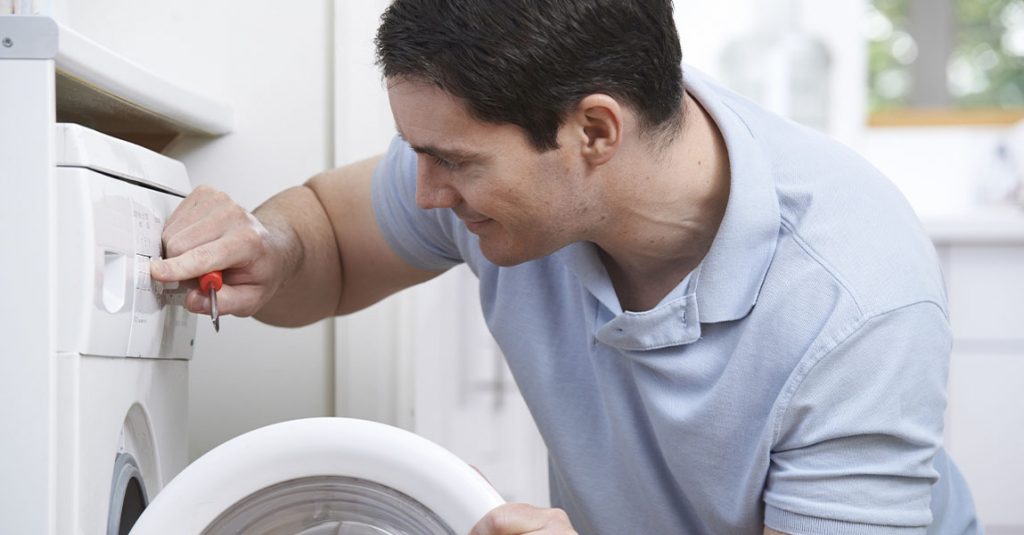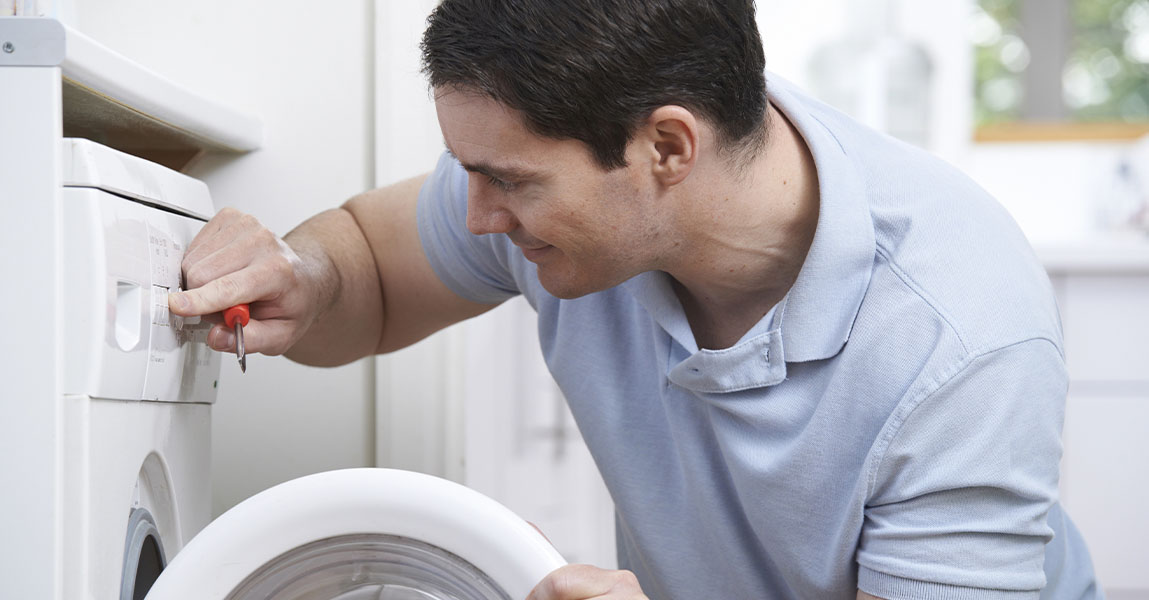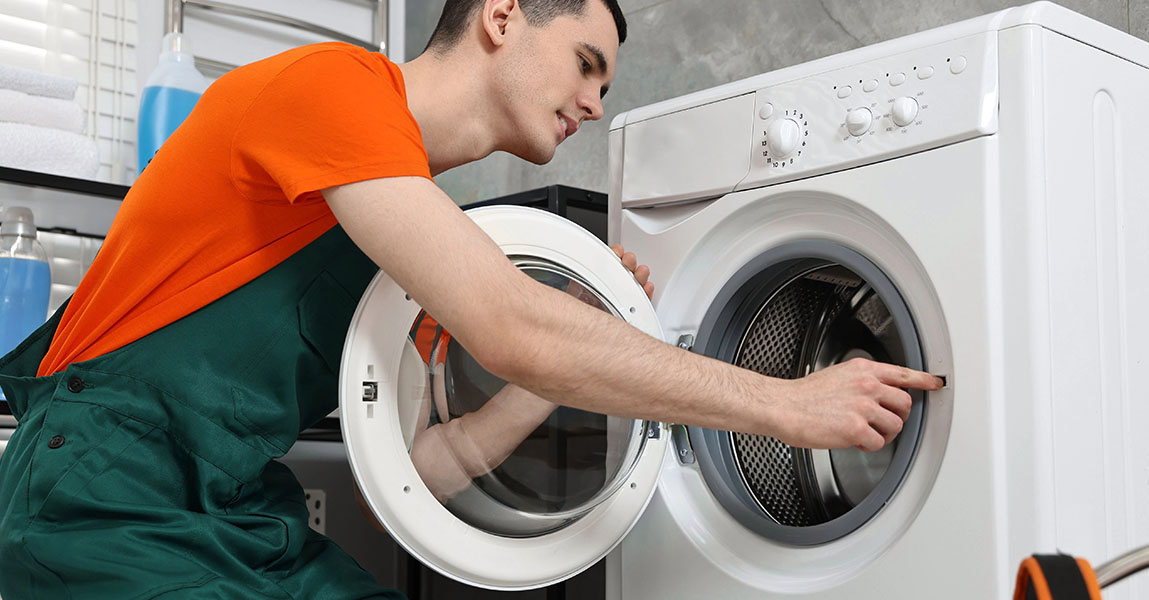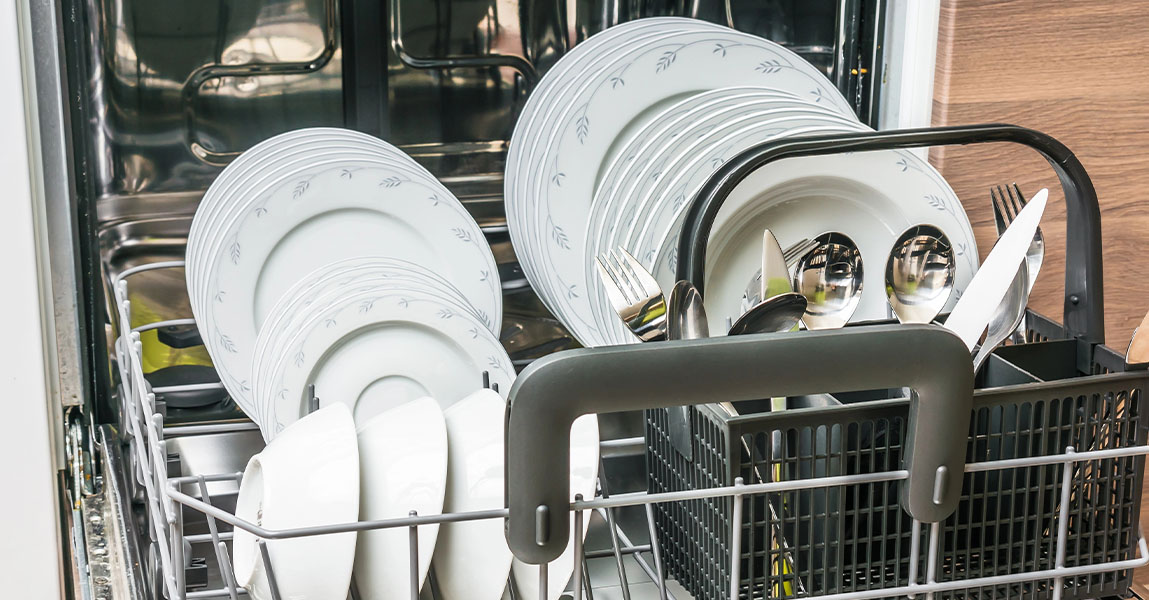When we press the start button and hear the dryer hum, we expect the drum to begin turning. If the machine powers on but the drum stays still, it means something mechanical inside is not working as it should. This problem is frustrating because the dryer appears alive but cannot complete the job. Let us walk through the most common reasons this happens and how we can approach each one.
Drive Belt Problems
One of the first parts we check is the drive belt. This thin but strong piece wraps around the drum and motor pulley to rotate the drum. Over time belts can crack, stretch, or snap. If the dryer powers on yet nothing moves, the belt may no longer grip. We can usually confirm this by opening the dryer cabinet and inspecting it. A belt that is frayed or loose must be replaced. Although the part is inexpensive, installing it requires removing panels and sometimes lifting the drum itself. Our team has seen many cases where homeowners replace a belt only to find out it slipped out of alignment. Taking time to carefully place it on the motor pulley and idler arm makes all the difference.
Motor Issues
Another reason the drum refuses to turn involves the motor. When the motor is failing, it might still hum or produce heat, but it does not have the strength to spin the drum. Dust buildup, worn bearings, or electrical faults can all cause this. We usually test the motor by trying to spin the drum manually. If the drum rotates easily by hand yet will not move on its own, the motor is likely weak. In some cases it overheats and shuts off after a short attempt. Motors are more expensive than belts, but once they fail, replacement is the only solution. One tip we share is to always check the venting system. If airflow is blocked, the motor can run hotter than normal, shortening its life.
Idler Pulley and Rollers
Dryer drums rely on more than the belt and motor. The idler pulley keeps tension on the belt, and rollers allow the drum to glide smoothly. If either of these parts breaks or wears out, the drum may seize. We sometimes find the pulley frozen in place, which lets the belt slip. In other situations the rollers flatten or develop grooves, stopping the drum from moving freely. A clear sign of this problem is a squealing or grinding noise before the drum completely stops. Replacing these parts at the same time as the belt is smart, since the dryer is already open. It prevents the need to repeat the job later.
Drum Glides and Bearings
On certain dryers the front of the drum rests on plastic glides or a bearing system. These pieces prevent metal from rubbing against metal. When they wear down, the drum struggles to move, eventually locking in place. We have seen cases where the dryer starts but stops after a few seconds because friction is too high. Checking for worn glides requires removing the drum front panel. If there are grooves or missing pieces, replacement is the only option. Adding lubrication is not a fix since it only masks the damage and can attract lint.
Faulty Start Switch or Capacitor
Even when mechanical parts are fine, the drum can stay still due to electrical issues. A faulty start switch or capacitor may allow the dryer to power on but not spin. The capacitor gives the motor the extra boost it needs to start turning. Without it the motor only hums. Testing these parts requires a multimeter, and replacing them involves working with live wiring, so it is not usually a do it yourself task. When these components fail, the dryer gives the impression it is functioning because lights and sounds remain, but the drum remains motionless.
Overloaded or Jammed Drum
Sometimes the explanation is much simpler. Placing too many clothes in the dryer or letting a large item ball up can stop the drum from moving. We have seen comforters, rugs, and heavy blankets wedge themselves against the sides, making it impossible for the motor to turn them. Before assuming the dryer is broken, it helps to remove half the load and try again. If it spins normally after lightening the load, the dryer is fine. Still, consistent overloading can damage belts and motors over time. Keeping loads balanced extends the life of the appliance.
Preventing Future Breakdowns
We all want to avoid problems before they stop us from doing laundry. Keeping lint traps and vents clean reduces strain on the motor and prevents overheating. Avoiding oversized loads protects belts and pulleys. Every few months, listening for squeaks or grinding noises can give early warnings of worn rollers or glides. Acting quickly on small noises often prevents complete stoppages. Our team also reminds homeowners to vacuum dust from around the motor area, since buildup can cause overheating. Simple habits like these make the dryer more reliable and reduce costly part replacements.
When to Call for Help
While replacing a drive belt or clearing an overload can be manageable, other repairs involve wiring and internal parts that are difficult without training. Working with high voltage appliances can be dangerous if not handled properly. If the motor, capacitor, or control board is the cause, professional help is the safest choice. For example, scheduling a dryer repair in Calgary gives peace of mind that the repair will be done correctly. Our experience shows that waiting too long after the drum stops moving often leads to multiple part failures, which makes the final repair more expensive.
Reliable Local Support
Knowing that help is nearby makes dealing with a broken dryer easier. If you are searching for Appliance Repair Calgary, you can find a range of services for all major household machines. Having local experts means quicker appointments and a better understanding of common issues in your area. We have seen how small electrical fluctuations or high humidity can affect appliances differently in Calgary compared to other regions. This local knowledge helps in diagnosing the real cause rather than just replacing parts blindly.
Get in Touch
If your dryer turns on but the drum will not spin, do not wait for the problem to grow. Our team at Freedom Appliances is ready to help find the cause and fix it safely. You can contact us to schedule an appointment and restore your dryer to working condition before the laundry piles up.
Frequently Asked Questions
Why does my dryer make a humming noise but not spin?
A humming sound usually means the motor is getting power but cannot start. The cause could be a faulty capacitor, a jammed drum, or a failing motor.
Can I replace a dryer belt myself?
Yes, but it involves removing panels and sometimes lifting the drum. If you are comfortable with tools and patient with alignment, it is possible.
Is it dangerous if the dryer drum does not spin?
It is not usually dangerous right away, but forcing the dryer to run like this can cause the motor to overheat and damage more parts.
How do I know if the motor is bad?
If the drum spins freely by hand but not when the dryer is on, the motor is likely weak. Testing with a meter can confirm it.
What can I do to prevent this from happening again?
Keep lint traps and vents clean, avoid overloading, and respond quickly to unusual noises. Regular care helps prevent most mechanical failures.





